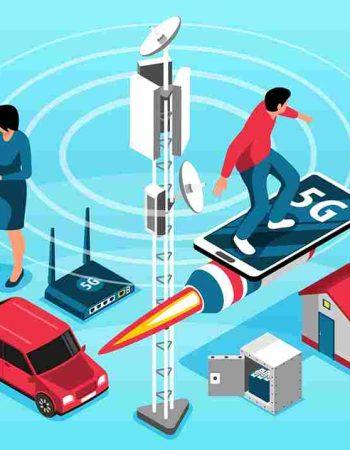In the digital age, the landscape of entertainment consumption is continuously evolving, with streaming services reshaping the way we watch television. The rise of platforms like Netflix, Hulu, and Amazon Prime Video has revolutionized the industry, posing both challenges and opportunities for traditional cable networks. In this blog, we’ll explore the profound impact of streaming services on cable networks the strategies they’re employing to adapt, and the innovative approaches driving their evolution.
1. The Disruption of Traditional Cable Networks
Traditional cable networks have long been the primary source of entertainment for households worldwide. However, the emergence of streaming services has disrupted this status quo by offering viewers a more convenient and flexible alternative. With on-demand access to a vast library of content, viewers can now watch their favorite shows and movies anytime, anywhere, and on any device.
This shift in consumer behavior has led to a decline in cable subscriptions, as more viewers opt for streaming services that provide greater control over their viewing experience. As a result, traditional cable networks have been forced to reassess their business models and adapt to the changing landscape to remain competitive.
2. Adaptation Strategies
To stay relevant in the era of streaming, traditional cable networks are implementing various adaptation strategies to meet the evolving demands of consumers. One approach is the launch of their own streaming platforms, offering subscribers access to their content library online. Networks like HBO with HBO Max and Disney with Disney+ have successfully capitalized on their existing content catalog and brand recognition to attract subscribers to their streaming services.
Additionally, cable networks are embracing partnerships and collaborations with streaming platforms to expand their reach and appeal to a broader audience. By licensing their content to streaming services or producing original content exclusively for these platforms, cable networks can tap into new revenue streams and engage with viewers who may not have traditional cable subscriptions.
3. Innovative Content Creation
Another key aspect of adaptation for traditional cable networks is the development of innovative content that caters to changing consumer preferences. As streaming services continue to invest in high-quality original programming, cable networks are under pressure to deliver compelling content that captures viewers’ attention and retains their loyalty.
To meet this demand, cable networks are investing in original programming across a range of genres, from scripted dramas to reality shows and documentaries. By focusing on niche audiences and experimenting with new formats and storytelling techniques, cable networks can differentiate themselves in a crowded marketplace and attract viewers seeking unique and engaging content.
4. The Future of Television
As streaming services continue to gain momentum and reshape the television industry, traditional cable networks face both challenges and opportunities on the road ahead. While the rise of streaming has undoubtedly disrupted the traditional cable model, it has also spurred innovation and creativity, driving networks to adapt and evolve in response to changing consumer preferences.
Looking ahead, the future of television will likely be shaped by a combination of streaming services and traditional cable networks, each offering unique content and viewing experiences to cater to diverse audience preferences. By embracing innovation, collaboration, and adaptation, cable networks can navigate this dynamic landscape and thrive in the digital age.
In conclusion, the impact of streaming services on traditional cable networks is profound, prompting networks to adapt their strategies and innovate to remain competitive. By leveraging partnerships, developing original content, and embracing new technologies, cable networks can navigate the evolving media landscape and continue to captivate audiences in the digital age.






